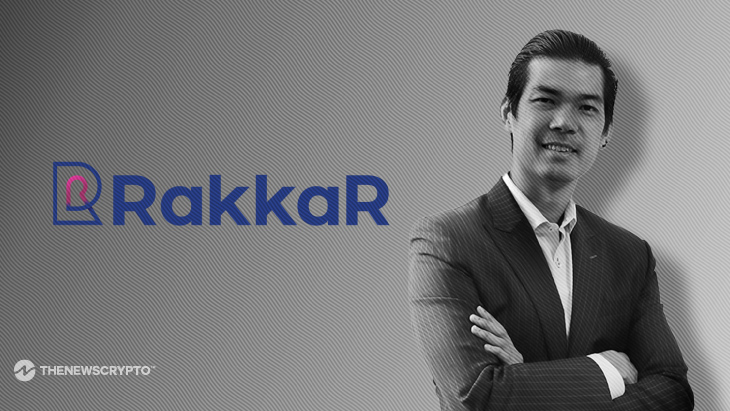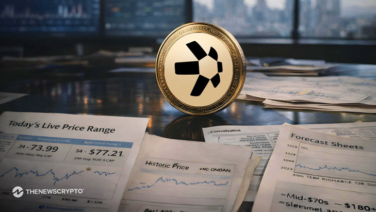Crypto custodians play a crucial role as the guardians of users’ crypto funds by safekeeping their private keys. The collapse of FTX has altered the complete scenario. The crypto custody industry is currently working on regaining trust worldwide.
TheNewsCrypto engaged in an interview with Arthit Sriumporn, the founder and CEO of Rakkar Digital, an emerging digital asset custodian, to discuss how custodian platforms streamline their operations in the current crypto regulatory landscape.
Arthit, with his decade-long expertise in banking and finance, holds a strong focus on providing efficient and effective solutions to address every customer’s challenges. His passion for transforming the financial landscape has led him to position Rakkar Digital as a secure and easily accessible custodian. He highlights the key challenges faced by the crypto custody market and the strategies for mitigating risks.
Dorian Batycka (DB): How do you see the current scenario of crypto being adopted by banks and financial institutions?
Arthit Sriumporn (AS): The Southeast Asia and Hong Kong markets, in which we operate, have a much clearer regulatory framework. In contrast, the situation in the US, with its variable interest rates, is highly uncertain regarding the digital assets market. At Rakkar Digital, we are a third-party qualified custodian funded by SCB 10X and powered by Fireblocks infrastructure. And what we do is offer safe and qualified custodianship for digital assets.
DB: What exactly is a qualified custodian and how that differs from other platforms that hold user funds?
AS: There are two parts to custodians. One is using technological infrastructure like Fireblocks to do self-custody, in this case, asset managers or exchanges or brokers can use tech infrastructure like Fireblocks. So they hold custody of their own fund, they hold their own private key. We at Rakkar Digital are licensed custodians. That means we follow regulatory frameworks like anti-money laundering procedures and know your customer rules.
The liability is actually with us because we hold a private key on behalf of the customers. So liability is very different. There’s a lot of emphasis on third-party lately now because of what happened with FTX, they hold 100% of their customer assets. In Thailand, the government has a very clear regulatory framework, allowing digital asset operators to hold 10% of their self-custody in a hot wallet for liquidity, but the other 90% has to be stored in a third-party qualified custodian. This model emphasizes the segregation of controls.
DB: Centralized & crypto custodian platforms have come under stringent regulatory scrutiny due to a series of events that highly risked the safety of user funds. What measures have these platforms taken to uphold user security against soaring scams, heists, and data breaches?
AS: There are multiple players in the ecosystem, operating as de facto exchanges, brokers, asset managers, and hedge funds. The custodian is actually the foundation of everything because custodians safeguard the asset, a very critical part of which is trust and security. And for exchange to implement their own custody is very difficult because their core business is the market match trading, but not safeguarding of the asset. And also these exchanges, it is very crucial for them to not hold everything in one bucket. So let’s say they want to do 100% self-custody, but if something goes wrong, the whole activity of the exchange can be jeopardized. So using qualified custodians, or a third-party custodian, is a good option for digital asset operators to defer the risk. And minimize the risk that can happen on-chain.
DB: And how about the integration of third-party custodian tools for digital assets like NFTs?
AS: Institutional exchanges and fund managers require adequate governance measures. As for NFTs, we have noticed an increasing number of entities that now offer storage solutions for these digital assets. Our company embarked on this journey last year and secured funding accordingly. While incorporating NFT support is part of our roadmap, we haven’t reached that stage yet.
DB: The crypto events of 2022 solidly registered one fundamental lesson in our minds: “Not your keys, not your coins.” How has the integration of multi-party computation (MPC) technology aided wallets in boosting the security of users’ private keys?
AS: We’re using Fireblock’s technology, which uses multi-party computation (MPC), that’s the underlying technology infrastructure. The MPC facilitates the division of a key into encrypted key shards and its storage on different servers. At the SDX layer of the hardware, we break it down into multiple key shards. As a custodian, we store keys in the cold wallet, meaning it remains offline and disconnected from the internet. We hold part of the key share in the signing device, which is offline signing. To hack this algorithm, one has to gain unauthorized access to multiple cloud servers and the signing device kept in a secure room. Only authorized personnel have access to the signing device, making it highly secure.
DB: Countries are actively developing their CBDCs and harnessing their potential use cases in the financial markets. Regulators and even the crypto community do throw their criticism over these initiatives. In your opinion, what are the pros and cons of implementing CBDCs?
AS: Continuing from my previous answer regarding regulations, we are not opposed to a strict regulatory framework. However, what concerns us more is an unclear regulatory environment. What we want to be able to do is we want to understand what can do and what cannot do. We want to avoid a situation like what occurred in the US, where there was significant uncertainty, leading people to take actions that later resulted in legal consequences. I think that’s not fair. So that’s why I said in this market it’s much more clear.
Speaking about the pros and cons of Central Bank Digital Currencies (CBDCs), I think governments and central banks are trying to catch up. Of course, CBDCs offer more flexibility and good use cases. It can facilitate a lot of use cases like cross-border remittances or payments. It could speed up and could make people’s lives much easier. People also become apprehensive when a central bank or jurisdictional authority exercises control over a CBDC. The fact that it is electronic and subject to various actions by the governing body further contributes to this unease.








